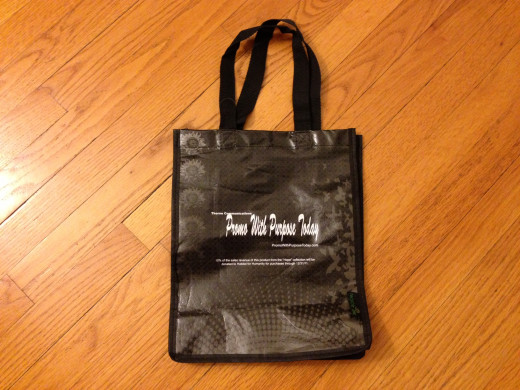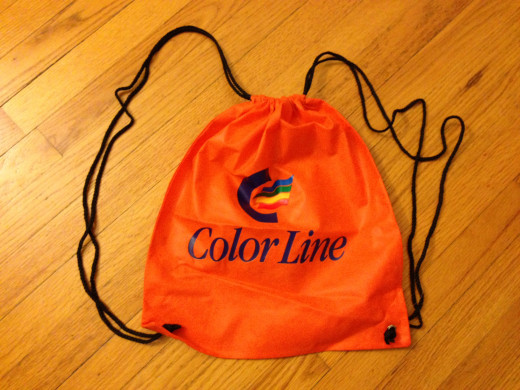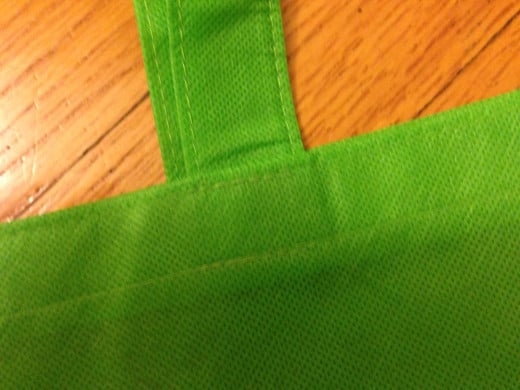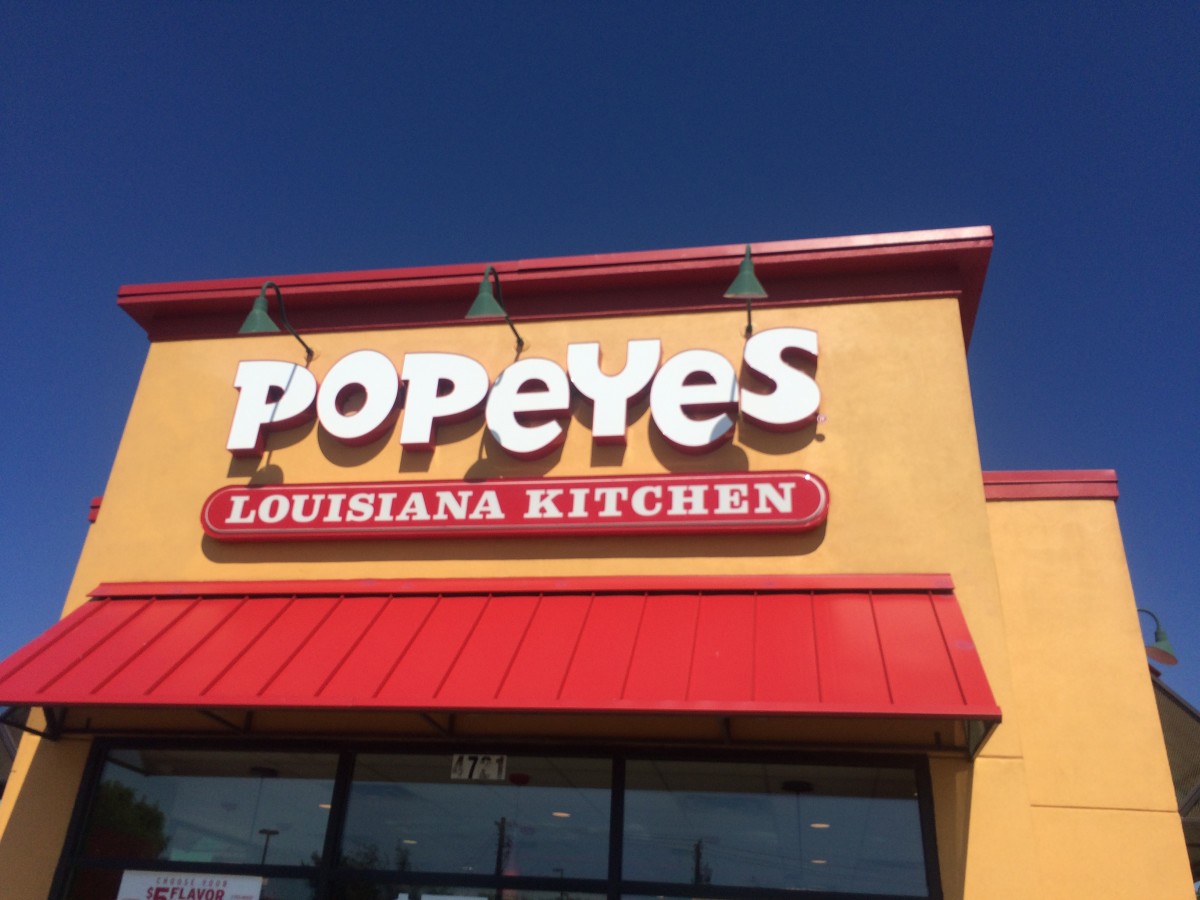Promotional Tote Bag Buying Tips

Price points for promotional tote bags run anywhere from a couple dollars up to several times that. Pricing depends on materials used, design and quantity ordered.
Here are some tips to help you get the right bag for your purpose and budget.

Styles of Promotional Tote Bags
The style of bag you chosen will depend on the audience who will be receiving them and the purpose the bag will serve.
- Grocery Style. Usually have shorter handles and wider depth to accommodate produce and larger grocery items. Often includes a bottom board piece to increase strength and stand up on its own. Ideal use: Retail.
- Flat or Gusseted. This is the typical trade show or conference bag. Though many people do use them at the grocery store, they have limited capacity. A gusseted version, which is not completely flat and has a bit of depth, can provide more utility. But even that style is more suited for accommodating large binders or stacks of paper than odd shaped items. Choosing styles with longer handles which can be slung over the shoulder or carried is recommended. Ideal uses: Trade shows and conferences, nonprofit giveaways.
- Shopper Totes. Similar to the grocery style totes, but much wider (up to 24 inches or more), have longer handles which can be slung over the shoulder, and may not have a bottom board. Greatest advantage is their ability to accommodate large awkward items. Ideal uses: Retail, trade shows.
- Drawstring Backpack. A newer entry on the promotional tote bag scene, these bags can be carried by their drawstrings or worn on the back like a backpack. Some styles feature additional handles for easy carrying. Ideal uses: Colleges and high schools (for older children only due to potential strangulation hazard from drawstrings).
- Fashion Totes. This is a cross between a promotional bag and a purse. Can be of many sizes, shapes and materials. May also feature special details such as stitching, metal or jewelry type accents and purse-like closures. Typically made of durable materials such as leather, faux leather, fashion textiles or some combination of materials. Generally the most expensive tote choices. Ideal uses: Women's conferences, travel.
- Messenger Bags. Modeled after bags used by bicycle messengers, these bags feature a long strap for wearing across the body, with a large compartment covered by flap. Ideal uses: Colleges, conferences.
- Duffel Bags. A barrel shape bag, usually with a zippered top closure opening to a large center compartment and could feature accessory pockets either or both on the inside and outside. Ideal uses: Health clubs and fitness centers, sports.
- Brief Bags. Similar in function to brief cases with short carry handles, often featuring a removable shoulder strap. Ideal uses: Conferences, sales teams.
- Backpacks. Backpacks are not technically tote bags (they are luggage), although some classify them as such. Designed to be worn on the back using shoulder straps and usually feature several compartments to stow items. Ideal uses: Colleges, sports, health and fitness, conferences.

Promotional Tote Bag Fabrics
- Polypropylene (Non-Woven). This fabric is non-woven and is a plastic material. Can also be made of recycled plastics such as bottles and yogurt containers. Usually the least expensive material, but still can be used for a couple of years. May or may not be recyclable.
- Cotton. Can be either sheeting (just like it sounds, feels like a bed sheet) or canvas (like sneakers, sometimes also referred to a duck). Generally more expensive, with organic cotton versions being the most expensive. The heavier the cotton, the more durable the bag... and the expense. Can be recyclable, but usually not accepted in typical waste collection streams.
- Polyester or Nylon. Available in a variety of weights and price points. Very durable, but may not be recyclable. Weight of fabric can often be identified by denier (Wikipedia), or the density of the fabric, usually identified with the letter "D" after it (example: 600D). The higher the denier, the thicker the fabric, the higher the price.
- Leather or Faux Leather. Usually only found on more expensive and fashion totes.
- Fashion Textiles. Natural or synthetic fabrics or blends that mimic fabrics used for clothing. Generally only used on fashion style totes.
Be aware that most tote bags are not washable, but may be able to be spot cleaned.
Imprint Options
Though there are other specialty imprint processes, the most common ways to decorate promotional tote bags with logos and text are:
- Silkscreening. Ink is applied to the bag surface through a screen (similar to using a stencil). Though single or two-color imprints are frequently used, the silkscreening process can also be used for full color (4 color process printing) on bags. Used on: Non-Woven, Cotton, Polyester/Nylon, Fashion Textiles.
- Digital Printing. Though not available for all tote bags, digital printing is becoming more popular and cost-effective, allowing for full color imprints. Design is often printed on a special transfer paper which is then pressed onto the bag surface. Used on: Non-Woven, Cotton, Polyester/Nylon.
- Debossing. Debossing is a process which impresses the logo or text into the surface of the bag, creating a subtle tone-on-tone imprint. Imprint area is often small due to the limitations of the debossing equipment. Used on: Leather and Faux Leather.
- Embroidery. Logos and text are stitched onto the bag surface. Usually due to limitations of embroidery machines (and budgets!), embroidered imprints are smaller than those available with silkscreening or digital printing since the larger the design, the more stitches it takes to create. Used on: Cotton, Polyester/Nylon, Fashion Textiles.
Do You Really Need a Tote Bag?
Time was when getting an imprinted tote bag (or two or three or more!) at an event or trade show was a given. While totes are still a popular giveaway, their automatic use is being questioned by both exhibitors and event producers. What's happening?
- "Reduce" to Go Green. Going green has three primary aspects: Reduce, Reuse, Recycle. While giving reusable bags might seem like a good idea since recipients can use them for shopping, school and more, some are adopting a "Reduce" strategy to go green and not providing bags at all.
- Not Needed. With the myriad of electronic gear that people want with them when attending events, they usually bring their own bags and backpacks. So receiving an additional tote bag is more of an annoyance, being just one more thing to lug around.
- Saving "Green." When economic challenges arise, cutting back on nonessential purchases can help businesses save cash, the other "green."
When considering the purchase of promotional tote bags, answer these questions:
- Will recipients likely bring their own bags with them? If yes, don't buy them.
- How will recipients use the totes in their lives? Will they use them at all? If it is unlikely to be used after event, don't buy them.
- Are there many small items that event attendees will be receiving at registration or throughout the event? If yes, then a tote bag could be a helpful and welcome convenience for both attendees and staff, making it a more useful purchase.
Additional Buying Tips
In addition to decisions about fabric, style and use, the following costs all need to be factored in since they could have an impact on the total investment in promotional bags:
- Shipping. Tote bags can be a heavy item to ship and handle, especially for heavier fabric weights. This could represent a significant cost.
- Order Early. During peak trade show seasons, primarily spring and fall, inventories of tote bags can be depleted quickly. Order at least 30 to 60 days in advance of target in-hand date and be prepared with "Plan B" choices.
- Storage. In addition to their weight, tote bags can take up significant amounts of storage space. Especially for large quantity orders, get an estimate of box size, number of boxes and weight when ordering so you can plan for storage and handling.
This article is accurate and true to the best of the author’s knowledge. Content is for informational or entertainment purposes only and does not substitute for personal counsel or professional advice in business, financial, legal, or technical matters.
© 2013 Heidi Thorne



